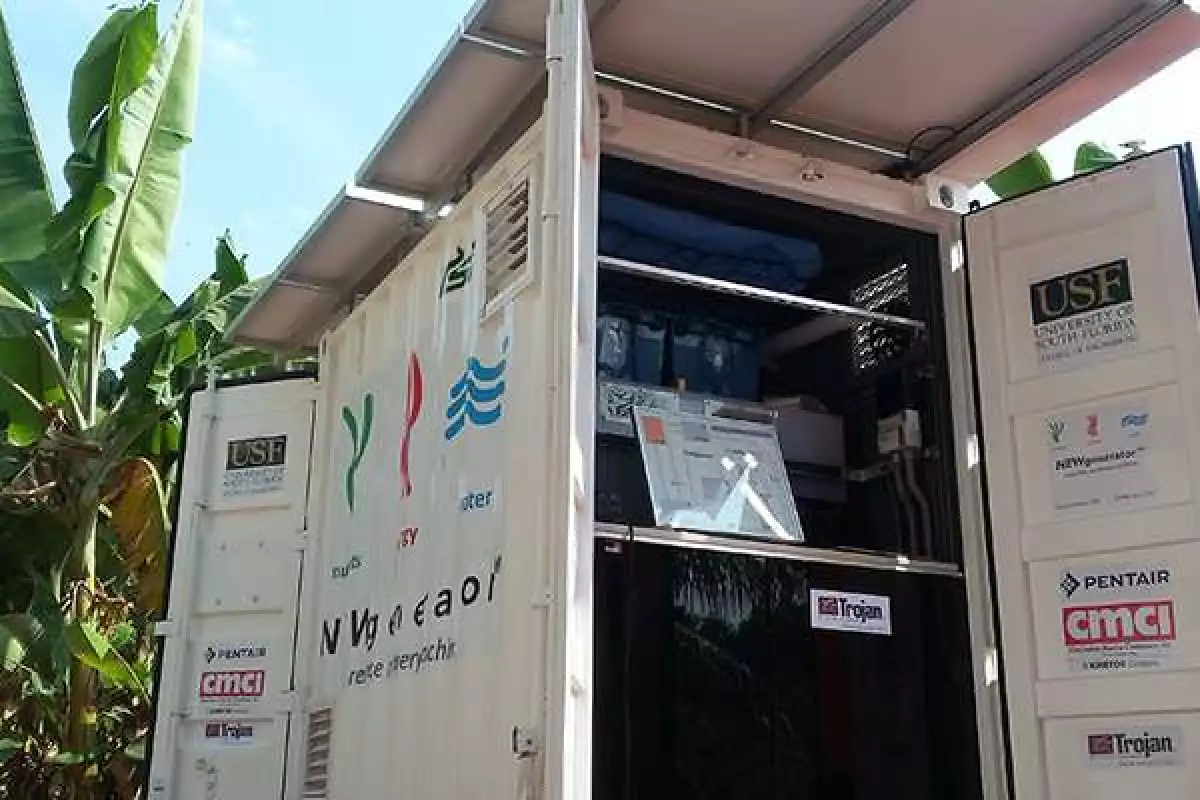People in developed countries might not give much thought to what happens after the toilet is flushed, but in developing countries that's a serious problem. A system called the NEWgenerator is designed to help take the strain off sewage infrastructure, acting as a mini wastewater treatment plant that recovers energy, clean water and fertilizer from sewage. Units will soon be installed in South Africa.
Plenty of past projects have tried to clean up the sewage situation in developing countries. The Loowatt turns human waste into biogas and fertilizer, a Bristol team fitted a urinal with a microbial fuel cell to produce "pee power," and the Nano Membrane Toilet is a waterless design that burns solid waste to produce fertilizer and electricity.
Designed and developed by a team of engineers from the University of South Florida (USF), the NEWgenerator processes waste to produce three different resources. By hooking it up to existing toilet blocks, the system also removes the need for the facilities to be connected to sewage systems.

First, the waste is fed into a bioreactor, where anaerobic microorganisms break down the solids and produce biogas. This process is done without the need for chemicals or aeration equipment, and the methane created can be harvested for use in cooking, heating or electricity production.
Then, the liquid waste moves into another chamber, where a fine-pore microscopic membrane filter removes bacteria, viruses and any remaining solid particles. The water that passes through is then disinfected with chlorine, and while the end result is probably still not drinkable, it's clean enough to use to flush the toilets in the block or irrigate crops.
And finally, the solid waste can be recovered for its nutrients, including nitrogen and phosphorus, and used to fertilize crops and gardens.
The first generation of the NEWgenerator was installed for communities in India last year, and now the USF team has been awarded a grant of US$1.14 million by the Bill and Melinda Gates Foundation to bring two new versions of the system to Durban, South Africa. One is an updated version of the system used in India, designed for use by up to 100 people per day, while the second is aiming to bump up that up to 1,000 users a day.
Both models will be hooked up to Community Ablution Blocks (CABs), shipping containers that have been repurposed with toilets, showers and sinks. These facilities have been installed by the South African government to serve developing communities that were previously lacking these vital amenities.
Source: University of South Florida





